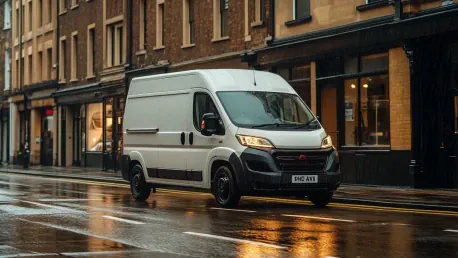The UK retail fulfillment industry is facing a critical juncture in 2025, with significant economic challenges such as changes to UK National Insurance and the National Living Wage introduced in the November 2024 budget. Coupled with slow consumer spending and heightened customer expectations, these factors are putting immense pressure on retailers and logistics providers. Businesses must find ways to balance profitability with legislative sustainability goals while delivering an enhanced customer experience. The landscape’s complexity demands innovative solutions to maintain effectiveness and ensure customer satisfaction in a highly competitive market.
Economic Strain and Retailer Challenges
The financial strain resulting from increased taxes and employment costs has placed immense pressure on retailers’ already thin profit margins. The slow consumer demand and reduced public confidence have compounded this issue, forcing retailers to contemplate difficult decisions, including potential job cuts. According to the British Retail Consortium (BRC), there has been minimal sales growth during the pivotal “golden quarter.” This period, traditionally signifying heightened sales between October and December, saw underwhelming performance, exacerbating retailers’ concerns for the year ahead.
Retailers are grappling with dual pressures of maintaining profitability while complying with legislative sustainability goals. The increased costs associated with the National Living Wage and National Insurance changes are squeezing profit margins, making it challenging for businesses to stay afloat. The bleak economic forecast and dismal BRC sales figures underscore the need for retailers to refine their delivery operations to remain competitive. Economic uncertainties demand advanced strategic responses, ensuring retailers can navigate through turbulent times with resilience and adaptability.
Rising Customer Expectations
In today’s retail environment, customer expectations regarding delivery services are higher than ever. Consumers demand seamless transactions both online and in-person, exhibiting little tolerance for delivery errors. Situations such as high-value items being left unprotected on doorsteps or delivery confirmations showing incorrect locations can rapidly lead to customer attrition. This demanding environment necessitates that retailers devise solutions to enhance operational efficiency while maintaining the high service standards expected by customers. Effective communication throughout the fulfillment process is crucial to managing these heightened expectations.
Managing delivery expectations effectively can significantly boost customer satisfaction and reduce costly instances of missed deliveries. This not only prevents the need for expensive redeliveries but also mitigates the risk of product damage or loss when customers are unavailable to receive their deliveries. Leveraging notifications to keep customers informed at every stage of the fulfillment process should be a critical aim for retailers in 2025. By doing so, retailers not only enhance the customer experience but also optimize operational efficiency and cost-effectiveness.
Strategic Responses to Delivery Challenges
Several strategic responses have been proposed to address the current delivery challenges faced by the retail industry. Enhancing communication with customers throughout the fulfillment process is one immediate and cost-effective measure. Efficient management of delivery expectations can significantly boost customer satisfaction and reduce the frequency of costly missed deliveries. This approach not only prevents the need for expensive redeliveries but also mitigates the risk of product damage or loss when customers are not available to receive their deliveries. Thus, leveraging notifications to keep customers informed should be a vital goal for retailers in the coming year.
In addition to improved communication, optimizing delivery routes in real-time can offer considerable benefits. Advanced technologies like artificial intelligence (AI) and machine learning can enhance delivery density and maximize the utilization of the existing fleet. By analyzing discrepancies between planned schedules and actual performance, AI can identify problematic addresses and factors impacting delivery times, such as school traffic or road conditions. Incorporating feedback from drivers, such as information about potholes, can further refine delivery performance and avoid delays. This intelligent route optimization can significantly improve efficiency and reduce operational costs.
Influencing Customer Behavior at Checkout
An emerging trend in the retail industry revolves around influencing customer behavior at the checkout to optimize delivery efficiency. By using up-to-date delivery information, retailers can present customers with intelligent choices that align with more efficient delivery schedules. For instance, incentivizing neighboring customers to choose the same delivery time through lower costs or even free delivery can significantly reduce travel distances. This approach not only maximizes capacity and allows for resource sharing across specific regions but also strengthens the retailer’s ability to manage costs effectively.
John Lewis has successfully implemented this strategy, achieving a 35% increase in their delivery capacity without needing additional vehicles or drivers, thereby reducing fulfillment costs by £1.8 million. As retailers become more adept at harnessing intelligence to meet diverse economic and consumer expectations, their methodologies will grow increasingly sophisticated. This includes matching delivery offers to customer personas, integrating data about clean air zones and traffic restrictions into routing models, and constantly adjusting delivery options and prices to support sustainability goals. These strategies can lead to substantial improvements in both operational efficiency and customer satisfaction.
Sustainability and Cost Management
Another significant aspect of enhancing delivery efficiency is the use of local “green” deliveries at low costs. This approach can further enhance customer perception and meet environmental objectives related to decarbonizing fleet operations. Retailers are encouraged to steer customers toward delivery options that seamlessly integrate with existing schedules. This strategy improves delivery density, reduces operational costs without overburdening drivers, and ensures that rising consumer expectations are met without over-promising—a common pitfall that often leads to disappointment.
The heightened financial pressures anticipated throughout 2025 necessitate that retailers refine their delivery operations to remain competitive. The collective insights provided by over 80 UK retailers in a letter to Chancellor Rachel Reeves underline the anticipated challenges related to changes in National Insurance, the National Living Wage, and the ongoing packaging levy. Efficient, effective, and timely operational performance becomes imperative for retail success. By adopting sophisticated strategies and leveraging modern technology, retailers can navigate these financial challenges while maintaining high service standards.
Leveraging AI and Real-Time Optimization
In 2025, the UK retail fulfillment industry is at a crucial crossroads, grappling with substantial economic pressures. The November 2024 budget introduced changes to UK National Insurance and the National Living Wage, exacerbating financial strains on businesses. Compounding these issues are sluggish consumer spending and escalating customer expectations, which collectively exert enormous pressure on retailers and logistics providers. The industry faces the challenge of balancing profitability with meeting legislative sustainability objectives while striving to enhance the customer experience. Navigating this complex landscape requires innovative solutions to maintain operational effectiveness and ensure customer satisfaction in a fiercely competitive market. Traditional approaches may fall short, and businesses will need to adapt and innovate to survive and thrive. Embracing technology, such as advanced analytics and automation, could provide the edge needed to streamline operations and meet heightened demands. Collaboration across the supply chain and investing in sustainable practices might also become pivotal in aligning with new regulations and consumer values, driving future growth.









